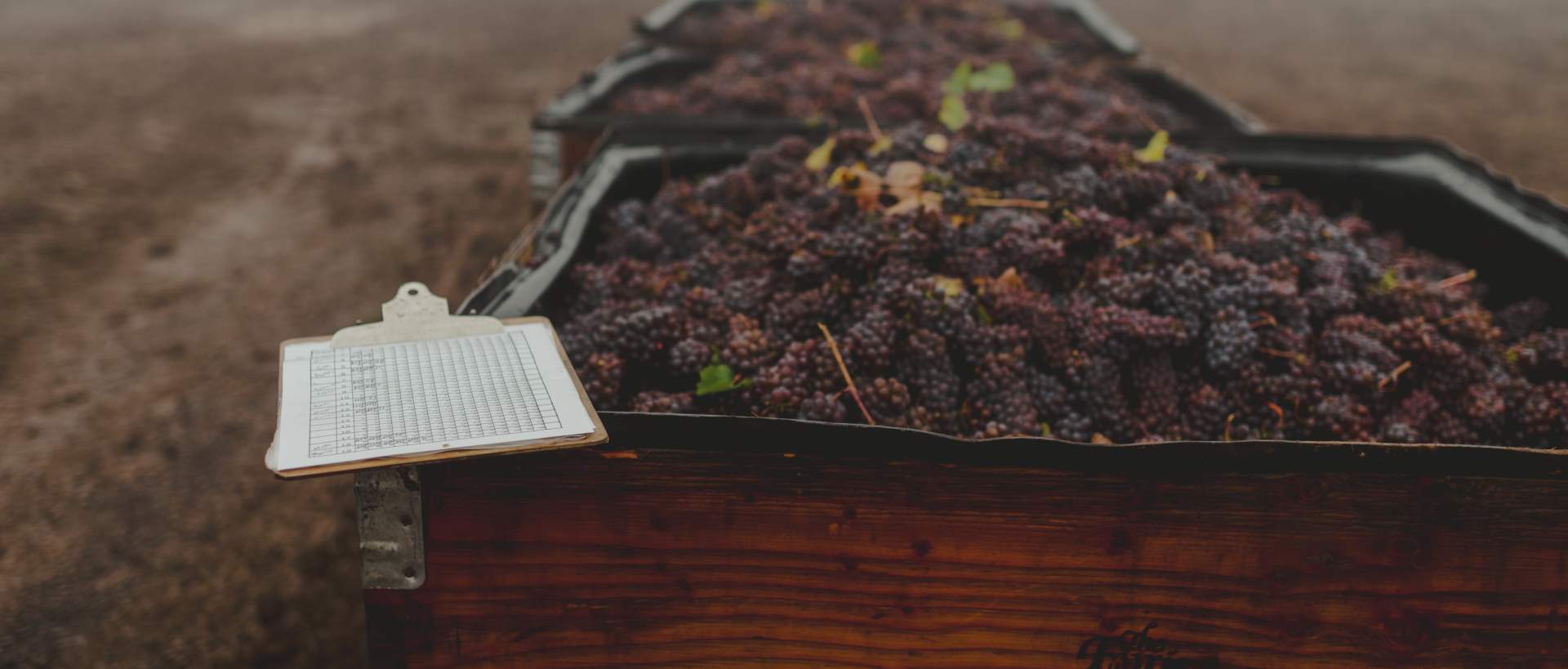In the Willamette Valley, fall brings with it the magic of changing leaves, crisp air, and for us wine lovers, the excitement of harvest season. Typically between September and October in Oregon, harvest represents not only delicious wine, but also a historically powerful metaphor for change and innovation, mixed in thoughtfully with a deep and profound respect for tradition. As Don Kladstrup put it, “Each harvest renews promises made in the spring.” Celebrate and care for the land, and it shall provide for you.
For me, this year’s harvest season has been extra exciting as I was given the opportunity to experience a few steps in the harvesting process, courtesy of Dobbes Family Winery, and to write about it. If you ever have an opportunity to participate in the harvest, make sure you jump on that chance. To see the care that goes into these grapes, not only as they grow and ripen, but also after they’re picked, is something I will never forget.
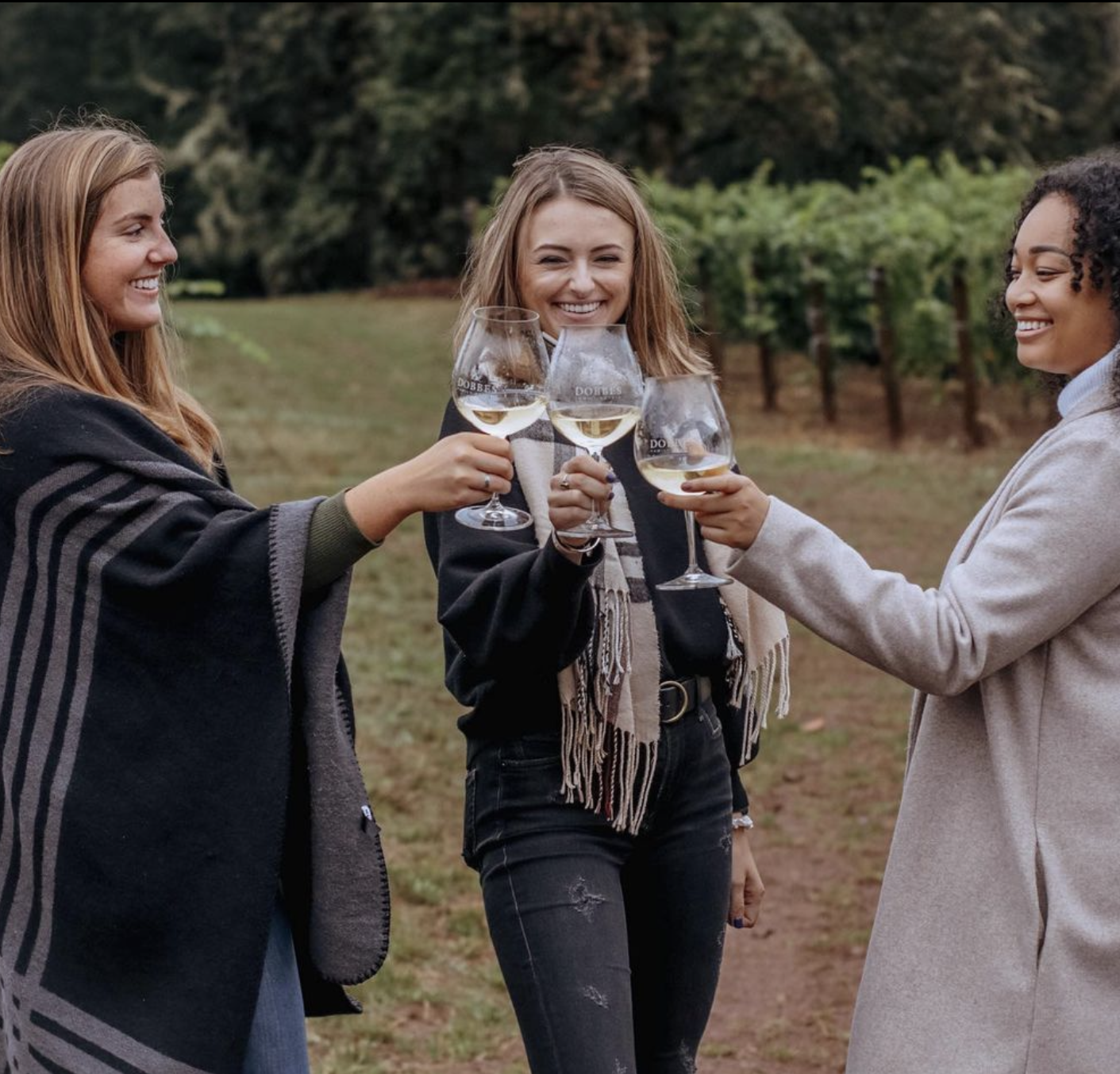
Dobbes Family Estate flourishes in fall, hosting several events for the fall season.
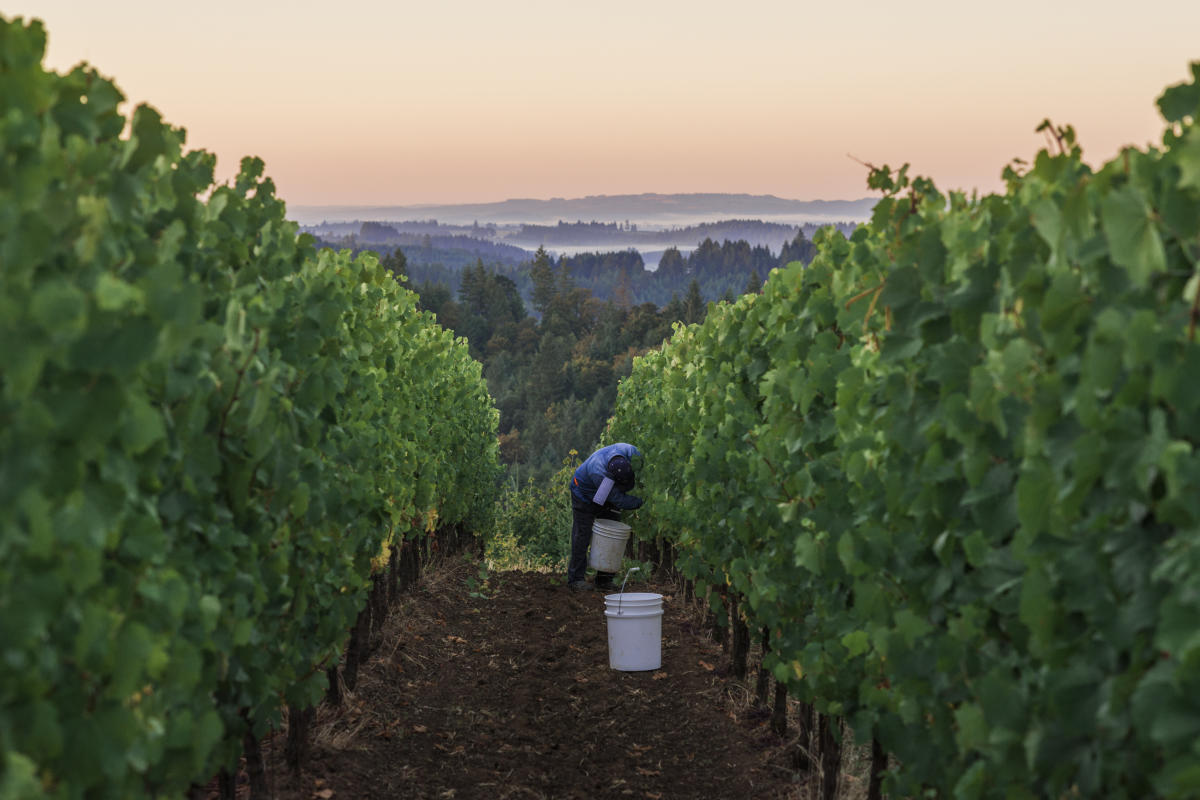
Autumn is the most important part of the year for winemakers, as the grapes are at their prime and the winemaking begins.
The day began at 9am, where a few co-workers and I were tasked with “Punching the Wine.” This involves taking what looked to me to be an 8-foot plunger, and press down on grapes that have been resting as they ferment. Before you ask, no, this isn’t the stomping from that I Love Lucy episode where she steps on the grapes. This is later on during the process. At this point, the grapes have already been pressed. The job of the Wine Puncher (not the actual title, but it makes me feel pretty cool) is to punch down the top layers of grapes to mix up each batch so that the carbon dioxide that has lifted to the top can reach the full batch of soon-to be wine. This is important for two reasons. First, carbon dioxide helps keep wine from spoiling (as we all know from that time we opened a bottle, forgot about it and tried to drink it two weeks later… that’s the oxygen!). Secondly, the carbon dioxide is a natural bug repellent, so keeping it evenly distributed throughout each batch allows us to sip from the vine bug-free. (We talk about living off the land, but these are the details that tend to skip our minds. Of course there would be bugs near fermenting fruit, so it makes sense that the genius wine makers of the past had to find safe ways to bypass the bugs.) The wine punching took approximately two hours, but that was with a lot of help (mostly from Dobbes’ Coco, thanks Coco!), and it was only one round, while many of the batches require multiple punches a day.
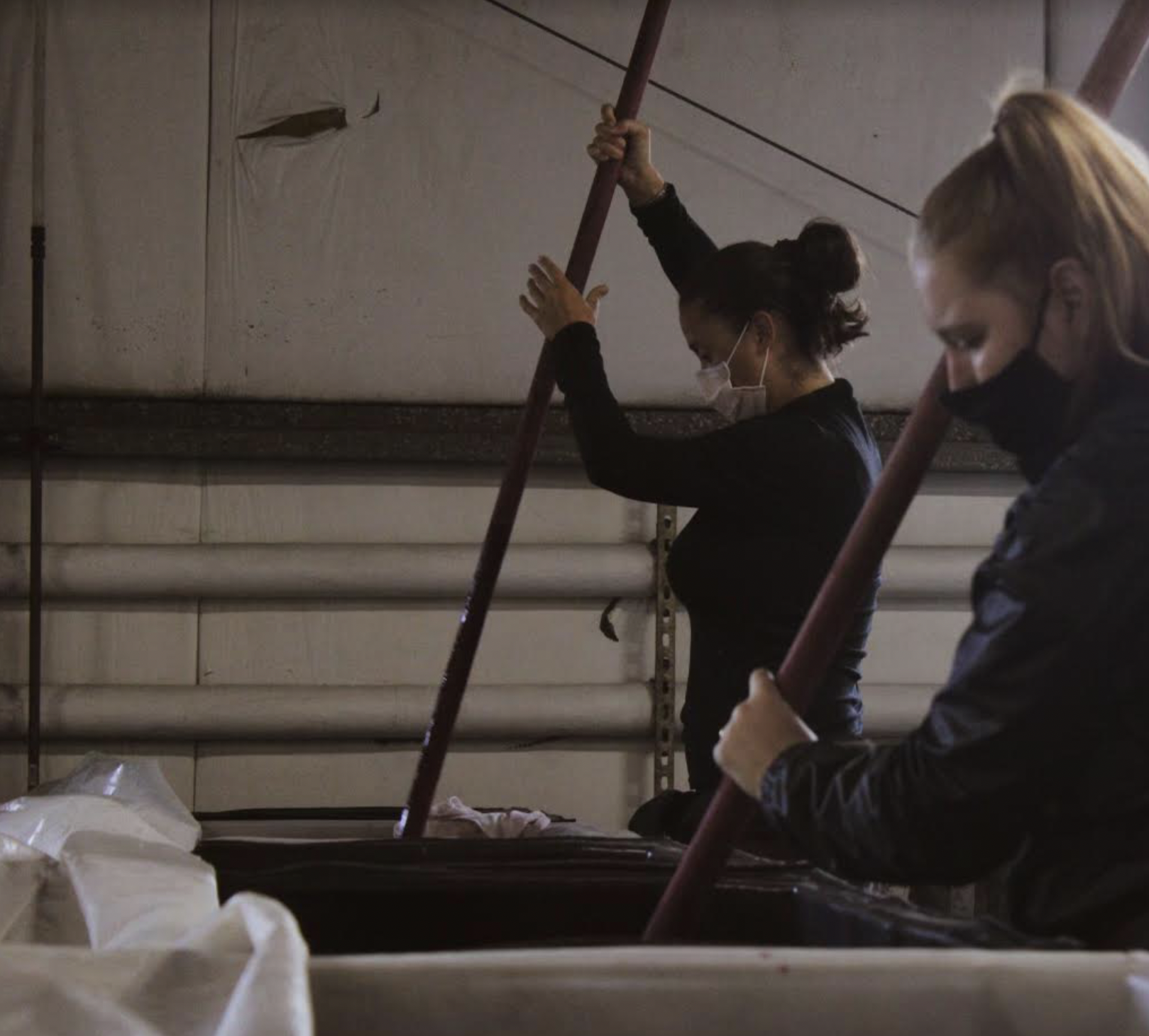
Lucy (the blog-writer) and Melanie (The Dundee’s Front Desk lead) punching the wine, a physically demanding and crucial step in the winemaking process.
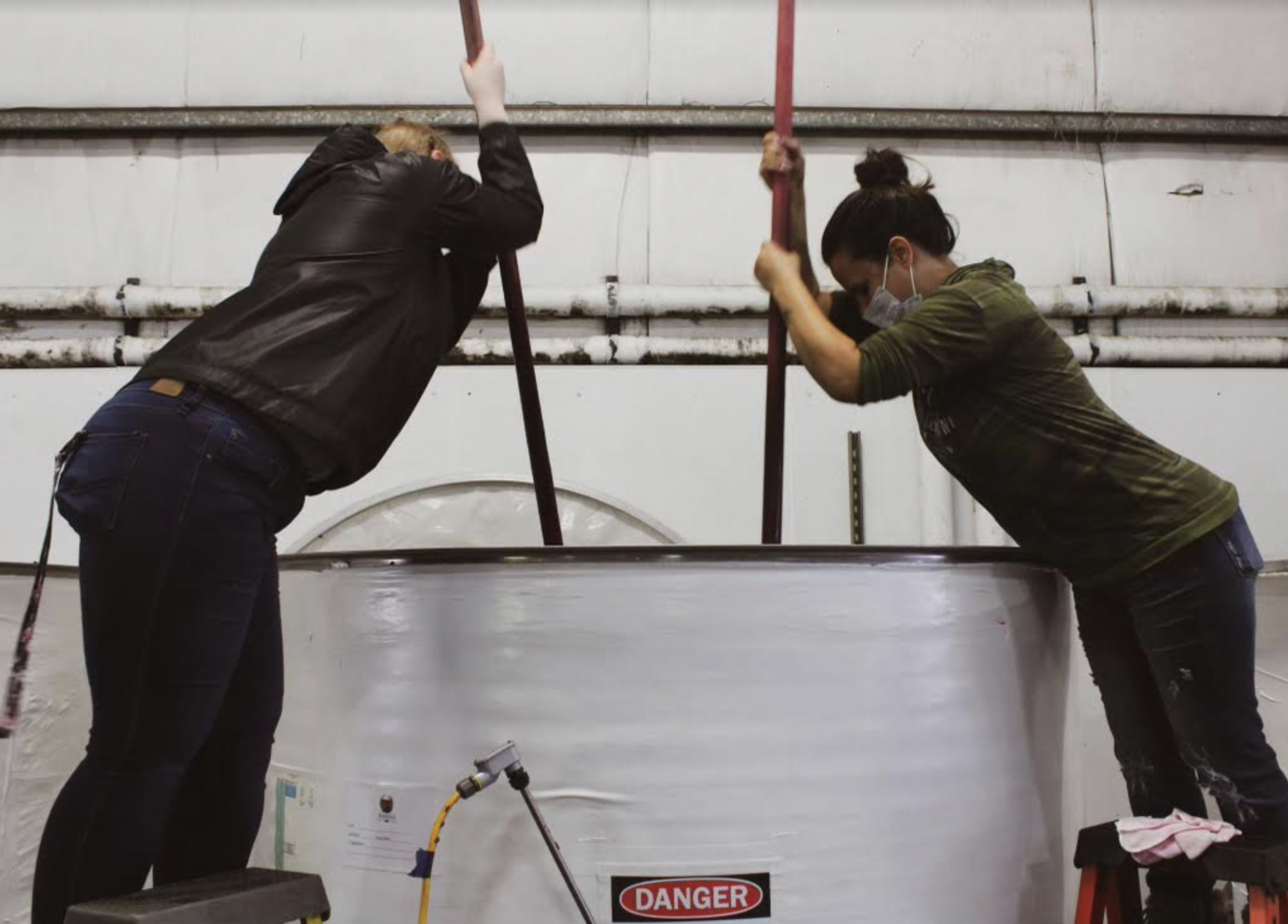
Melanie and Jenna (The Dundee’s GM) give it there all, a combination of strength and technique, punching the grapes.
Next up, I was given the opportunity to sort the grapes! Each barrel of grapes is lifted to the sorting machine and then dropped onto a vibrating conveyor that allows the grapes to pass several rounds of interns and employees who sort through the grapes by hand, picking out whichever bunches don’t meet the winemakers expectations, along with any grape-less branches or leaves that made it this far. If the wine punching was a physical workout, sorting challenges the brain, as you always have to keep a keen eye out and make sure only the best grapes make it into the bottle.
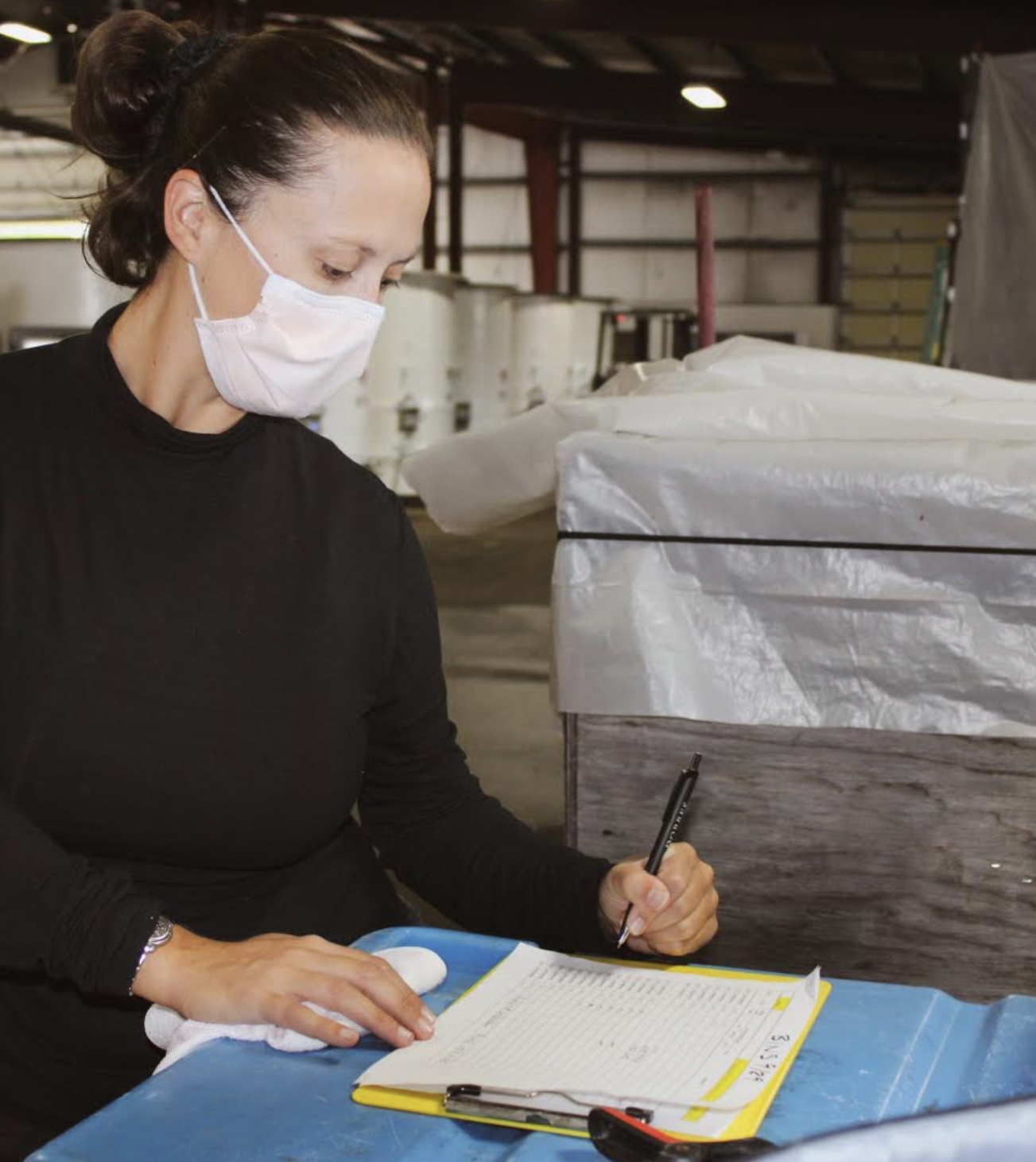
Lucy (the blog-writer) takes meticulous records during your shift working harvest.

The sorting process involves automated conveyors and numerous human hands and eyes to pick out imperfect grapes.

Every grape is nurtured, considered and tended to, and that’s part of the magic in the winemaking process.
Now, you might be thinking, “But couldn’t a lot of this be done with machines? Why is it done by hand?” And huzzah! I asked the winemaker, Andy McVay, the very same thing, to which he told me, “When machines are doing the work, there are fewer people learning.” Um… how cool is that? Andy continued to explain how wine has a science to it, but it’s also about taste, and smell, and the look of each batch. Harvesters have to work with the grapes to understand the process inside and out. So the only role the machines play is moving the grapes in a way that helps the harvesters see a bigger picture. And if their harvesting process isn’t proof enough that the Andy truly believes in that hands on philosophy, the very fact that Dobbes Winery allowed me there at all cements it. I was clearly going to be the slowest worker and least trained, but it’s because I could use my hands and not a machine that I was able to learn what needed to be done. And I cannot recommend each and every varietal at Dobbes Family Winery enough.

Andy McVay (winemaker) has a “hands on” winemaking philoshopy….”When machines are doing the work, there are fewer people learning.”

It’s a tough job, but somebody has to sample the wine. Winemaker, Andy says the 2021 vintage is already tasting delicious.
Throughout September and October you can checkout harvest reports, the latest news from wineries, harvest recipes, winemaker interviews and harvest events, keep up to date on the latest and be sure to experience the harvest first hand!
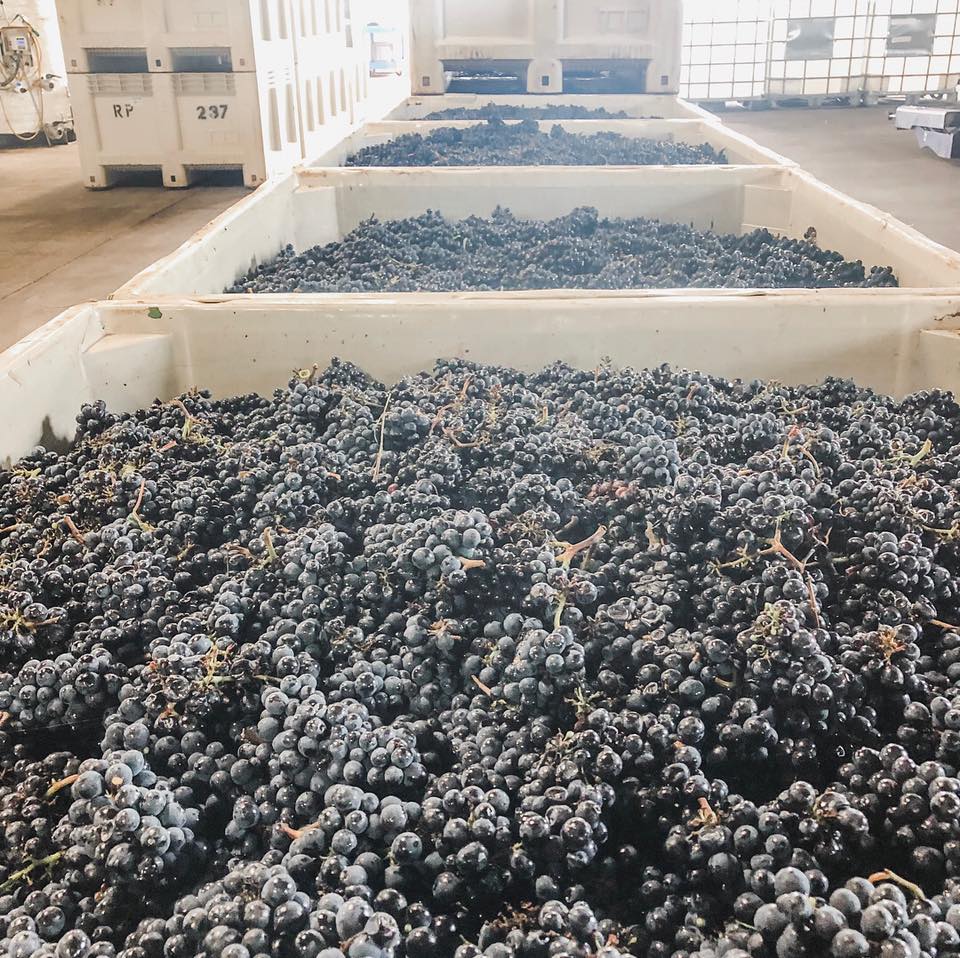
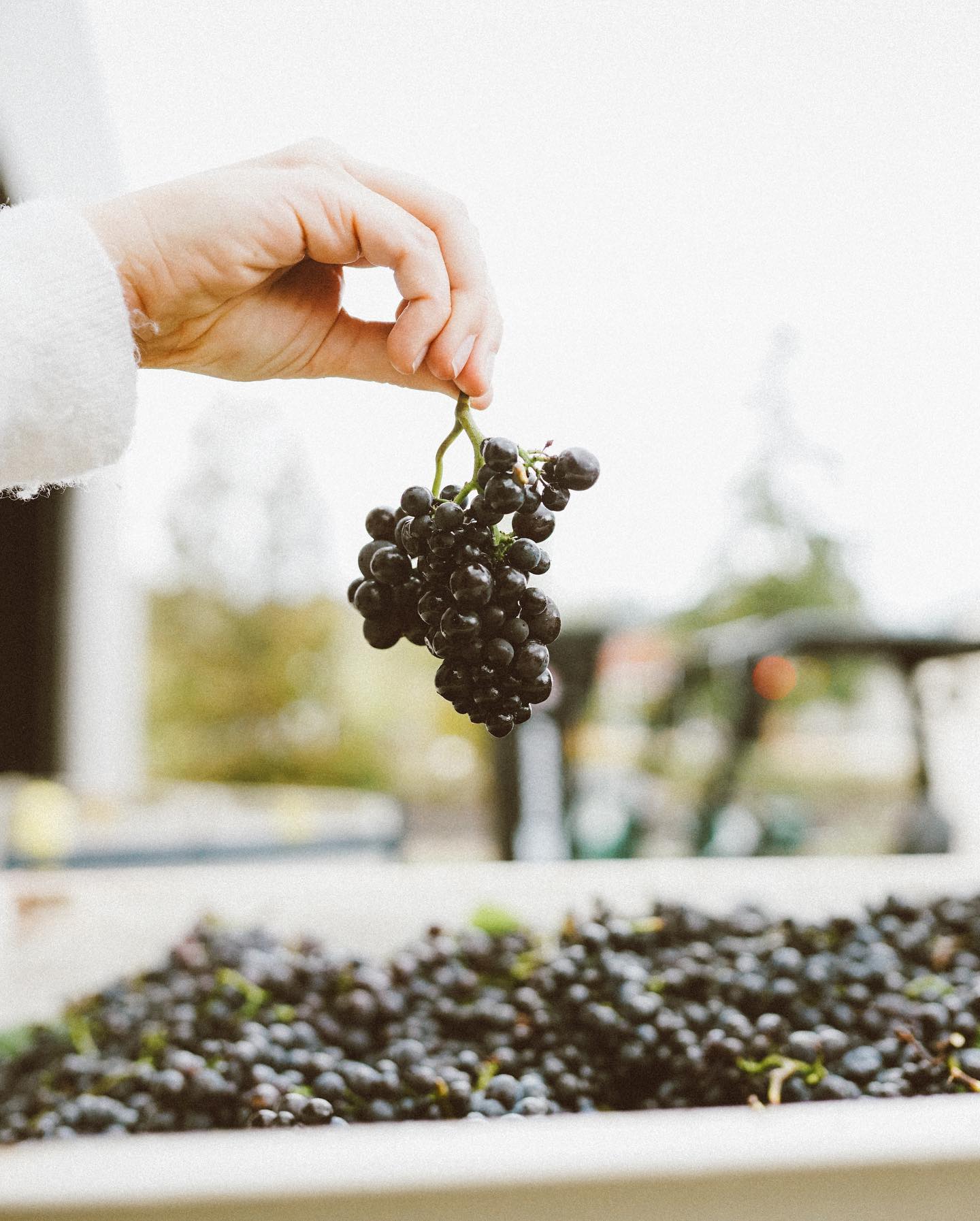
Some wineries even create harvest playlists on Spotify, so if you’re choosing between two different wineries to attend, let the music lead you…
THE DUNDEE’s
REX HILL
DOMAINE ROY AND FILS
